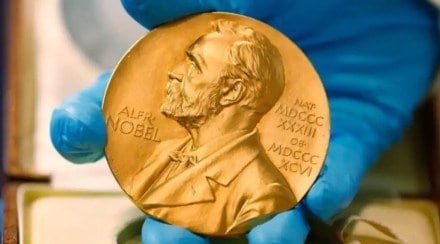The Nobel Prize in economic sciences for 2022 was awarded to former chairman of the US Federal Reserve, Ben S Bernanke, and two other US-based economists Douglas W Diamond and Phillip H Dybvig, for their works on the banking sector and the financial system. Their research has substantially improved the understanding of the role of banks in the economy, especially during financial crises, said the Royal Swedish Academy of Sciences – the institution that awards the Nobel prize. Let’s take a dive into knowing the three recipients with a close look on their work.
Also Read: Pocket gains after RBI rate hike: Focus on auto, bank, discretionary consumption sectors; IT good contra bet
Ben S Bernanke, Distinguished Senior Fellow, Brookings; Former Chairman, US Federal Reserve
Ben S Bernanke was the 14th chairman of the US Federal Reserve, and is now Distinguished Senior Fellow with The Brookings Institution in Washington DC. His Nobel Prize-winning work was an article he wrote in 1983, in which the economist focused on the global depression of the 1930, which is touted as the worst economic crisis in history. The depression in the 1930s began with a normal recession, which then developed into a banking crisis.
- Bernanke’s research led to a transformation in the perception that a banking crisis was a consequence of a declining economy. The study established that actually, it is a cause. Bernanke, through his research, devised that bank collapses were decisive for a recession developing into a depression.
- Bernanke showed how the main cause of the downturn of global economies was the decline in the efficiency of the banking system. The economist, with the help of statistical methods and a few historical sources, highlighted how the factors relevant in the drop in GDP were directly linked to failing banks.
- Repairing a damaged banking system can take many years and during this time, the economy functions poorly. Bernanke’s research showcased how post the depression of the 30s, the economy did not begin to recover until the government implemented stringent measures to diminish bank panics.
- The research done by the former chairman of the US Federal Reserve showcased how with the collapse of the banks, valuable information about borrowers was lost. This data could not be recreated quickly. As a result, the society’s ability to channel savings into productive and profitable investments plummeted severely.
Douglas W Diamond and Phillip H Dybvig
Douglas W Diamond is a professor of finance at Booth School, University of Chicago; while Phillip H Dybvig is a professor of banking and finance at Olin Business School, Washington University. The study that earned the two US economists the Nobel Prize was a joint article by them, published in 1983. The article consisted of a theoretical model that talked about the importance of regulation in the inherently vulnerable banking system.
- Diamond and Dybvig showed in their research how banks work as an intermediary between depositors and borrowers, which makes the institutions inherently vulnerable, stressing on the need for regulations. They based their theoretical model on the fact that savings must be transformed into investments for the economy to function properly.
- The two economists showed how banks help the households in an economy by becoming an investment tool. In addition to this, banks help create liquidity in an economy, and thus, further aiding it. By maintaining a long maturity on its assets and short maturity on its depositors, banks ensure that the depositors can access their money on demand, while also fueling cash flow.
- Diamond and Dybvig, with their research, also curbed the vulnerability of the banks, with the help of deposit insurance from the government. When the depositors have assurance about their money, there will no longer be a rush to withdraw, which eradicates chances of a bank run.
The work developed by the three Nobel Laureates have boosted the understanding of banks, its regulations, and how a financial crisis should be managed. Thus, their research is being touted as the foundation of modern bank regulations.
Also Read: Paytm performance update Q2FY23: Number of loans triple, merchant payments surge, payment users grow
